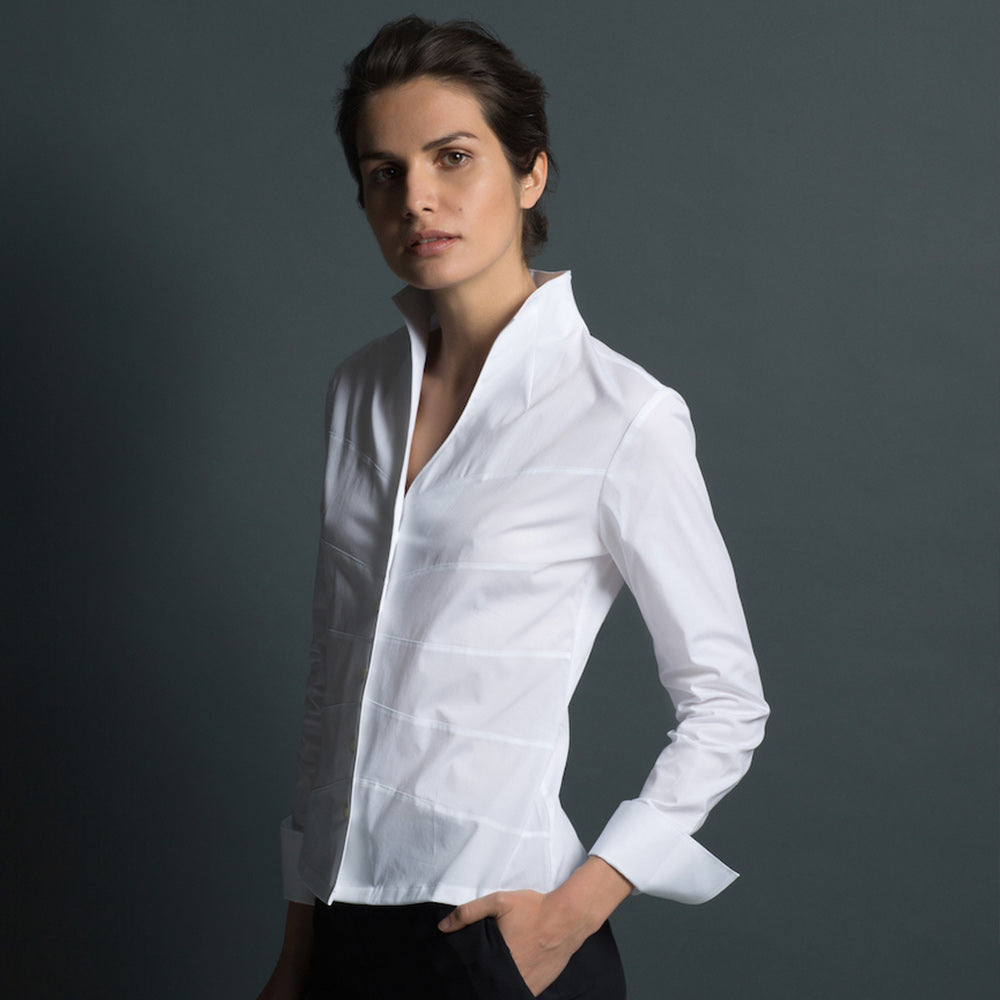Your Wardrobe Could Help Your Career
at work
we are what we wear
Over the years, so many of my customers have told me how hard it is to make the right clothing choices for work. Often, I’m pleased to say, the solution is to have a couple of classic white shirts to fall back on. Their versatility is a great virtue, and they won’t become a one-wear-waster lurking at the back of the closet.
But it got me thinking about that crucial work-day question: ‘what shall I wear today?’. For me it’s often a choice between what I didn’t wear yesterday and – let’s face it – what’s clean. According to psychology experts, however, what we wear to the office can really impact our standing at work, promotion prospects and even how we feel about ourselves.We all make conscious (and often unconscious) decisions about what we put on first thing. Obviously, we want to appear ‘professional’ (whatever that means in your industry) and we need to show variety if we’re not channelling a Steve Jobs identikit vibe. The next 9-to-5 may involve a job interview, a formal review, some off-site brainstorming or just a budget meeting with that attractive new accountant. Decisions, decisions.But how you are perceived by your boss, and your colleagues, affects your chances of rising up the ranks and your standing at the water-cooler. A lot of the psychological research backs up our gut feel – that how we are perceived and treated by others, and how confident we feel ourselves, depends on what we wear. But some studies produce quite unexpected results too.
here are a few research-based facts examples from a psychology professor, karen Pine:
-Men notice dress sense first in a woman (yes, before face and body), whereas women initially note the face, smile and eyes in a man.
-The human eye takes longer to move across patterned fabrics, and this time delay makes a body appear larger.
-Women wearing more masculine outfits are more likely to be appointed than those looking more feminine.
-Choosing the right clothes can make a person less anxious and less depressed.
-Most women wear less than half of the clothes they own, while this is true of only one in five men.
-And finally, women are twice as likely to wear jeans when depressed than when happy...
Research into colour, described by Michael Solomon, author and speaker on consumer behaviour, indicates that red and black clothing is rated most attractive by men on women, whereas there is little colour effect when women rate women. But digitally swapping around the colours worn in the experiment indicated a positive effect on the wearer’s behaviour, making them appear even more attractive...
So what can the practical woman with a good sense of style (and humour) take from all this?
1Work is a serious business – so your outfits need to take it seriously and be suitably formal and conventionally suited when necessary.
2Have a stable of block colours and be careful with patterns unless you’re Sylphlike.
3Wear strong reds and blacks when you want to attract attention; keep it classic and minimal when you don’t.
4Keep your options simple (and the use of your wardrobe more efficient) by wearing smart base layers that can be accessorised up (eg with colour) or down (eg with jeans – but only when you’re feeling happy!).
5Get the garment fit spot on and the comfort will make you feel good, and the more confident you are the better you will be perceived, whatever you’re wearing.
1 Karen Pine: “Mind What You Wear – The Psychology of fashion”
2. Michael Solomon: www.michaelsolomon.com











